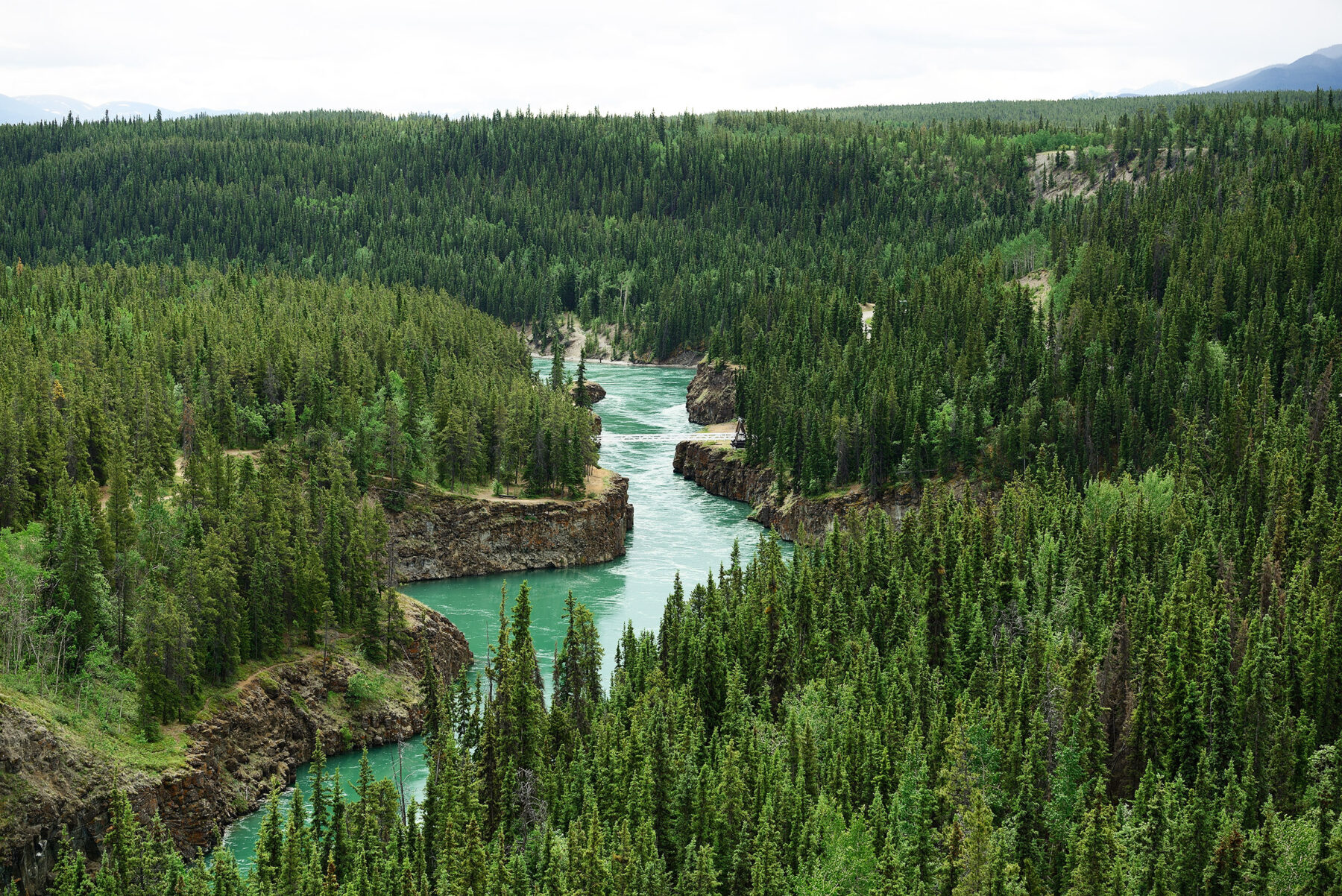Albert Einstein believed the definition of insanity is doing the same thing over and over and expecting different results. Two kayaking fanatics from Tasmania do not agree, and aim to prove their argument when they return for the third time to tackle one of the world’s toughest paddle marathons: the Yukon 1000.
Others may think they’re insane but for Steve and Kate Dawson if something is worth doing it’s worth doing well – which may mean doing it more than once. It’s the only explanation that makes sense when you realise the ‘thing worth doing’ is the famous Yukon 1000 – a 1000-mile (1600km) race along the remote Yukon River. It is the world’s longest race for canoes and kayaks, starting at Whitehorse in Canada’s Yukon Territory and finishing at the Dalton Highway bridge in Alaska, the first place where the river is crossed by a road for 1000 miles.
Thousands of teams apply each year but entry is limited to a maximum of around 30 teams – in July this year the Dawsons will make their third start at the event, after a DNF in 2023 and what they call a ‘conservative’ approach in 2024, aiming to finish rather than being fast. This year will be different.
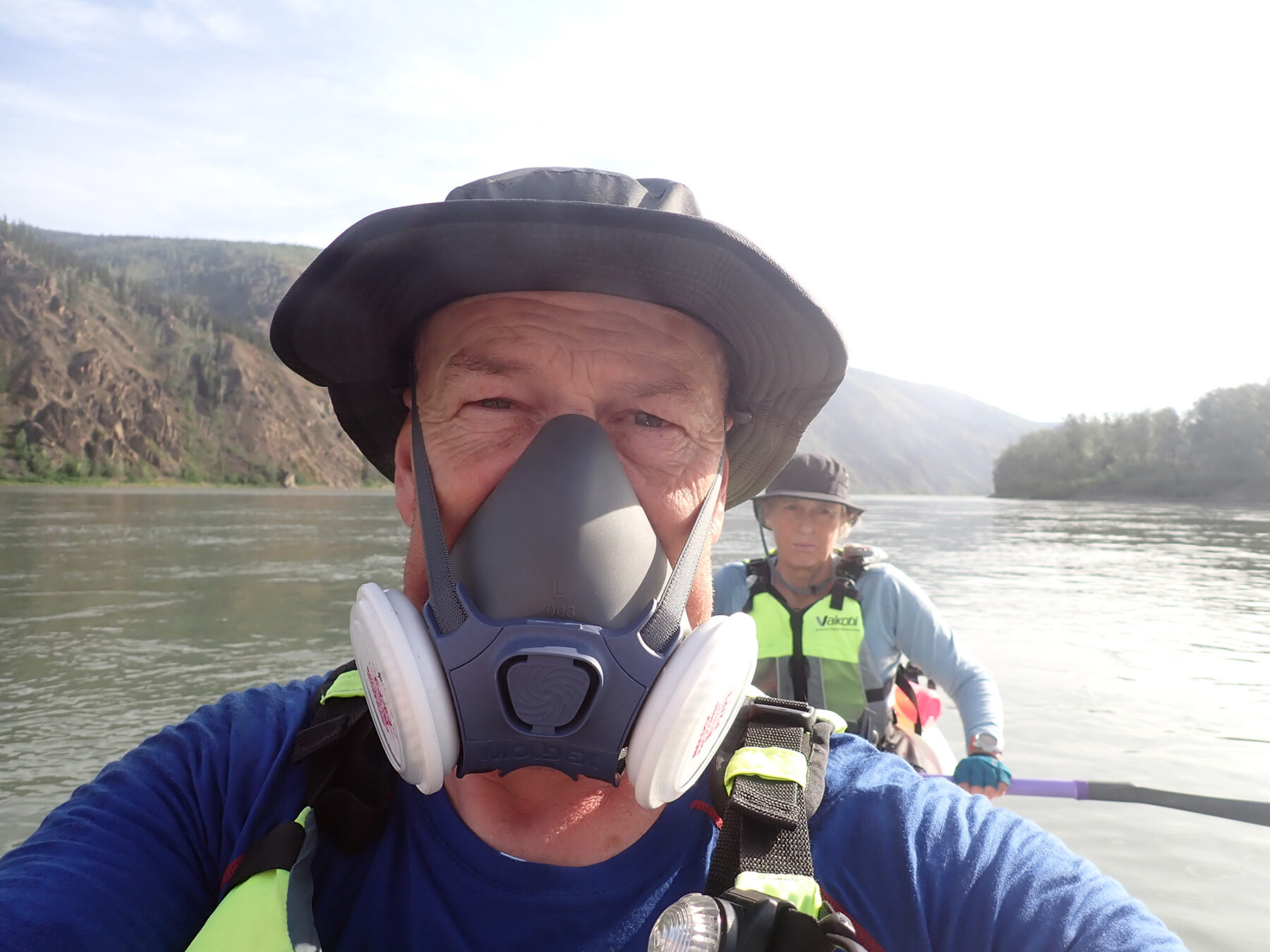
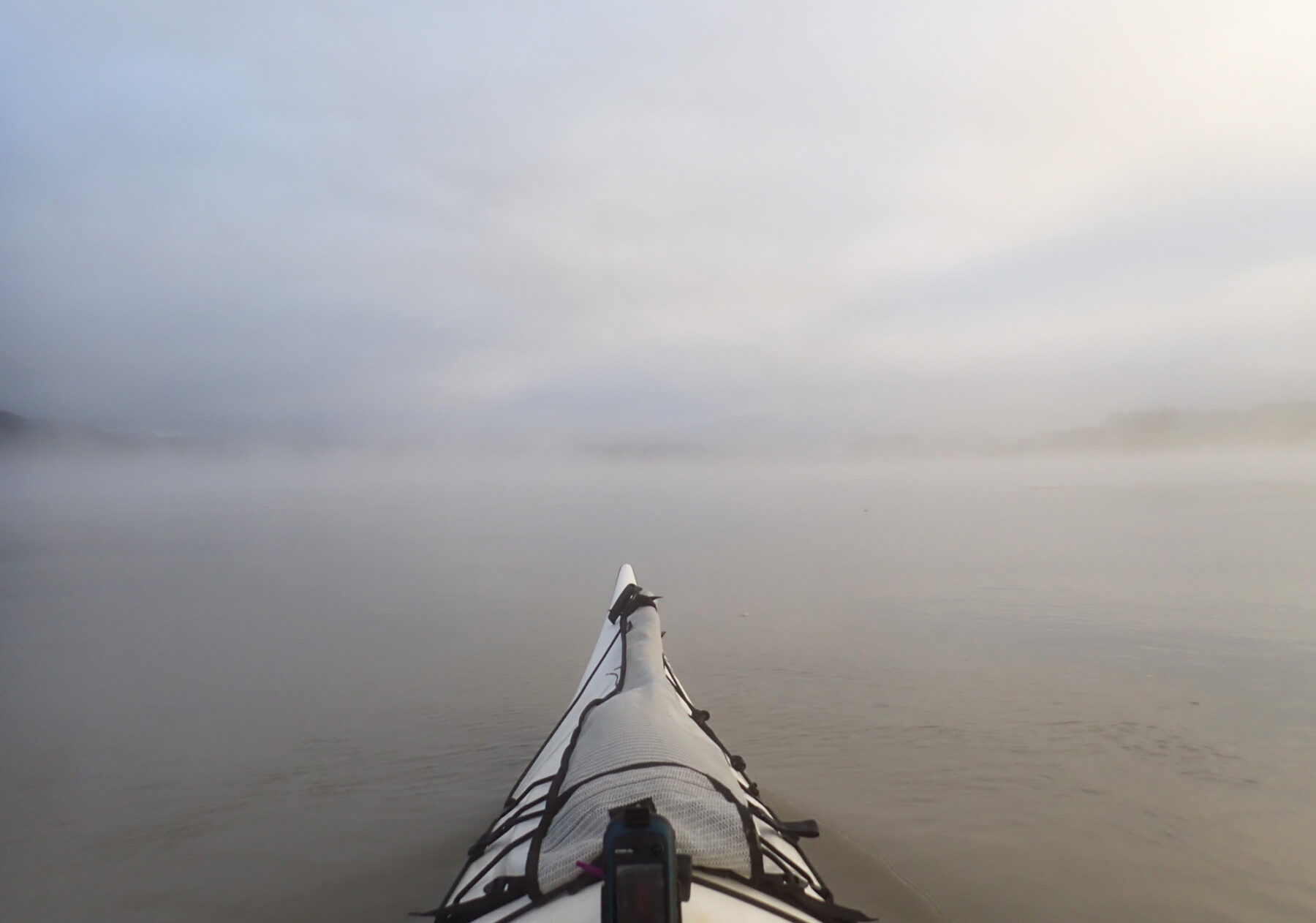
“After having to withdraw in 2023 because I suffered breathing difficulties during a Canadian wildfire, we rationalised our return as, ‘unless you break a record, all anybody will remember is that you finished an obscure 1000 mile race’. Having said that, if you do break a record your name goes on an obscure website until somebody knocks it off and you’re just another finisher,” Steve says.
The good, the bad, and the smelly…
Given the ‘trophies’ are a beer, a medal and a T-shirt whether you are first or last home, the Dawsons put a huge amount of thought into making it to the finish line for 2024. They planned their course in careful detail, chose a slower boat with better handling and took heavier, more reliable equipment than many of the other competitors.
As a result, they arrived at Dalton Bridge feeling like they could comfortably do another 1000 miles (a future attempt at the Yukon 2000, which continues to the Bering Sea, has not been ruled out). There were some minor blisters managed with band-aids and some minor sunburn on the backs of their hands. Otherwise they finished comfortably – and enjoyed it.

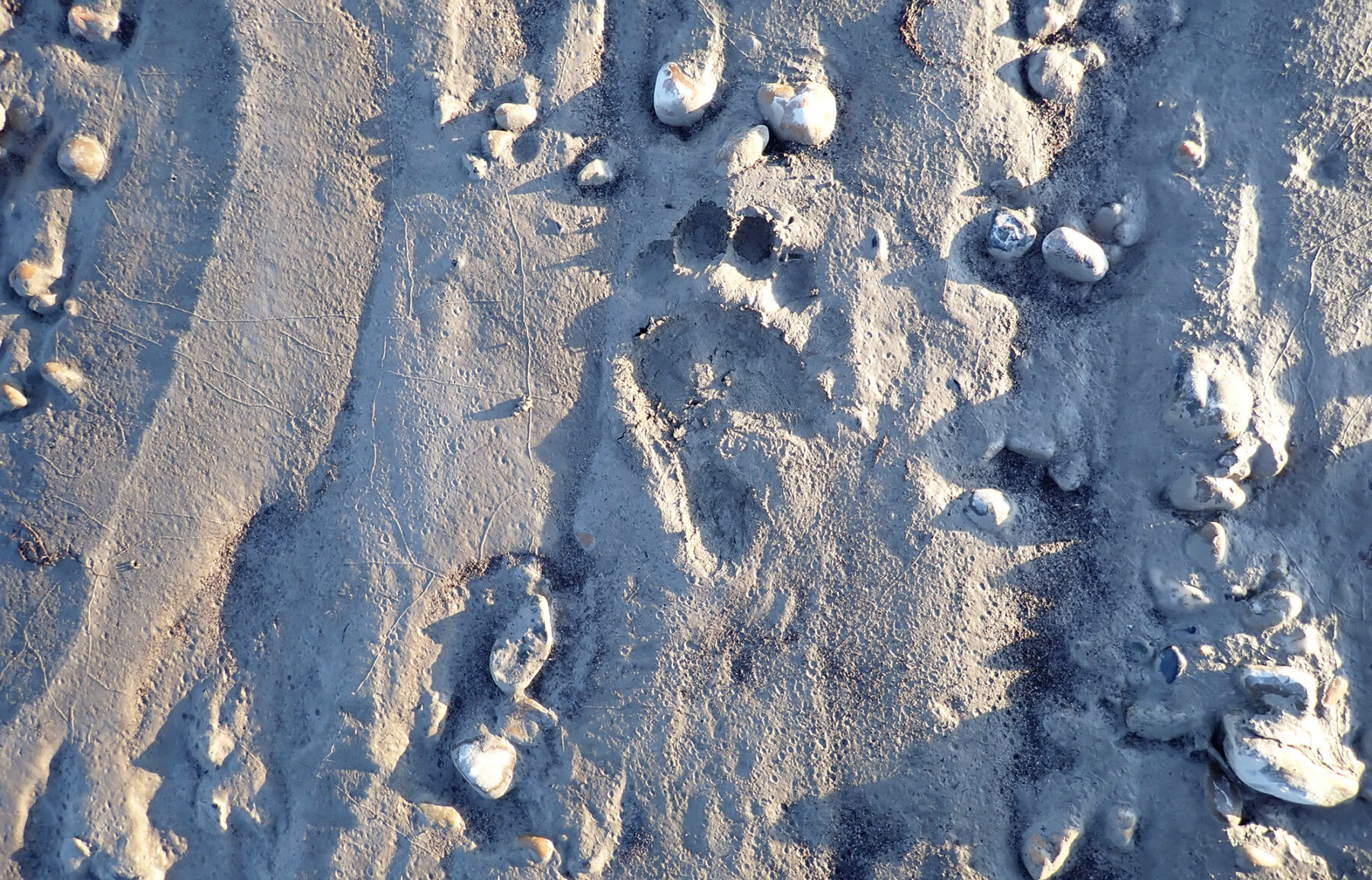
“Blisters are debilitating and only get worse once they’ve started, and people also pull out of long-distance races because they can’t keep sitting due to pressure on nerves. I couldn’t feel my leg for three weeks after one event. And, of course, with this one, you do have to be bear-aware, too.
“We didn’t encounter any bears, only bear prints on the very last night. Two bears of different sizes which was enough to have us repack the boat and head downstream 10km to the least hospitable gravel bar on a river of a thousand inhospitable gravel bars.”
By now, dear reader, you are probably wondering about the ‘niceties’ of a week or so spent paddling on a wide, cold river. After all, there are no bathrooms (or trees) on gravel bars. Racing on the Yukon River is not for the faint-hearted.

“It’s pretty much paddle, sleep, paddle, with a ‘whore’s bath’ (wipe down with a facecloth) when necessary, and that is more a response to the build-up of sweat on your skin and avoiding rashes than the build-up of aroma.
“Yes, you’re wearing the same clothes for seven to nine days, adding or removing layers according to the temperature swings. By the start of Day Three you’ve reached levels which would draw sideways glances in an outback roadhouse on a summer day!”
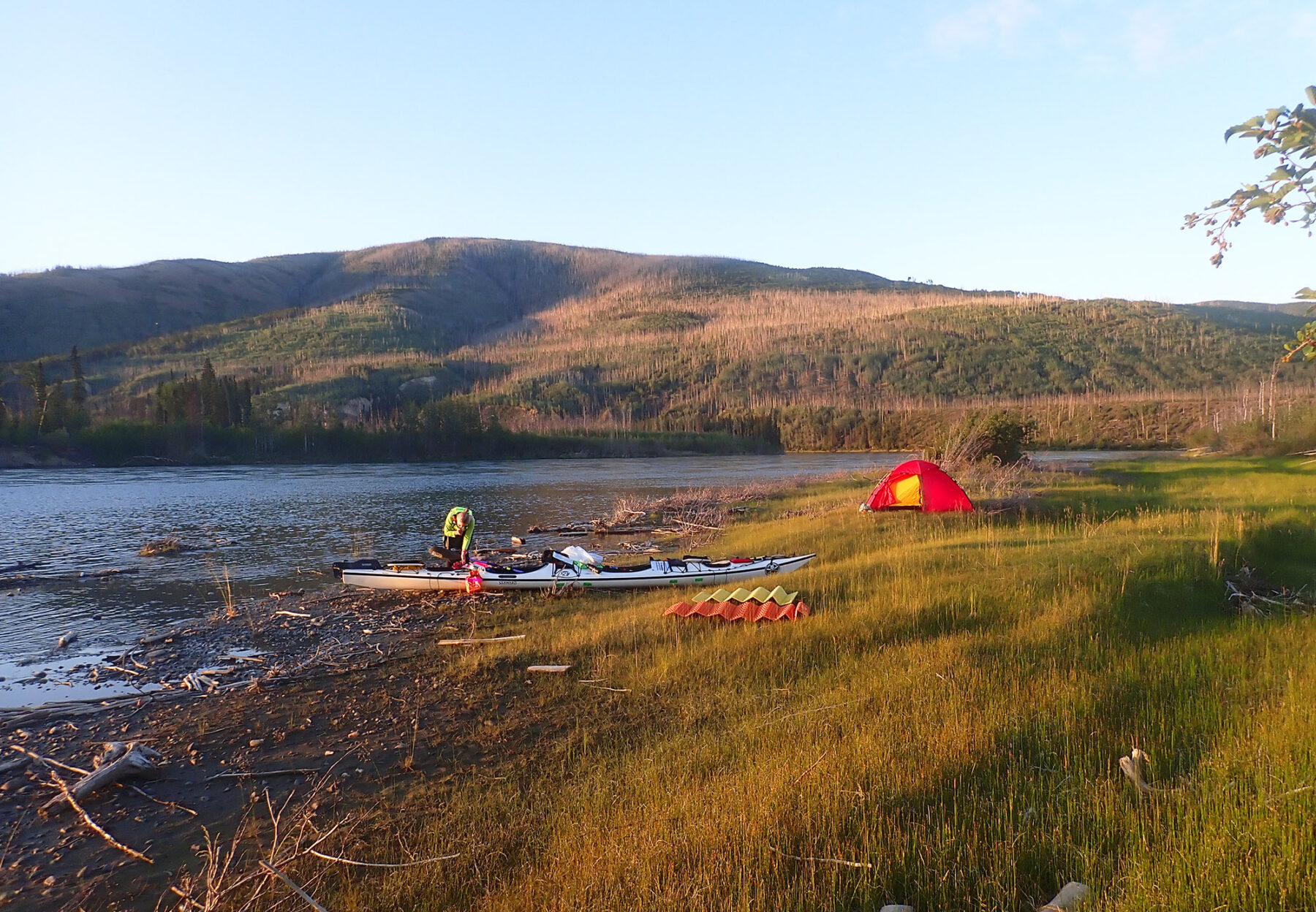
Apparently, according to Steve, by Day Five you’re so inured to the smell that you can no longer sniff it out – but it’s there. To prove the point, when you reach the finish line, organiser Jon Frith greets you with a handshake not a hug!
“We became aware of that aspect back in 2019 when we finished the shorter event, the Yukon River Quest. We walked into a hotel reception in Dawson and before confirming our reservation, the receptionist walked around opening doors and windows.”
Aside from the need to pick ‘safe’ places to camp, the biggest issue is getting enough sleep. Without it, you stop paddling efficiently and safely – and you may start hallucinating.
“We did have hallucinations on Day Five after crossing into Alaska. The clock goes back an hour at the border so you get a 19-hour day. Kate started seeing words forming in clusters of trees on the hillsides. I could see words, but not generally the same words. A few hours later I was seeing words in the sun reflected off ripples on the water. They started out as short words like ‘outhouse’, ‘give way’ and ‘periodical’ until – and this might be a hallucination of a hallucination,” he laughs, “but I swear I saw ‘don’t f#*k this up; it’ll be really expensive to come back’!

“And it is bloody expensive, but for Kate and I, the draw is in the experience of being there, very much alone, relying on each other and working as a team to overcome the challenge of a fairly big distance in a shortish time frame. At 1600km, the race is only two-thirds of the length of the Murray River but we took 43 days to paddle that.
A kayaking dream fulfilled and another on the horizon
“More than that, with the Yukon we really enjoyed the experience of travelling the distance as a couple, under our own steam, reliant on just each other for 1000 miles.
“It was after we finished that the other thoughts emerged. How fast could we have been if we had not been conservative? When we added up all the extra time off the river, in excess of the six hours we had to stop each day, we could have done it in six days and so many hours, not seven days.
“It’s all about being a well-prepared team, and we’ve worked long and hard to be that. We have good technique so we don’t accumulate injuries, solid navigation skills and plenty of distance experience so we know how to pace out 18-19 hours of paddling. Many teams who enter would not tick all those boxes and, most probably, your deficits are the seeds of your downfall.”
For Steve, 55, and Kate, 52, the Yukon was an item on Kate’s 50th birthday bucket list. It was a logical next-step for the former Kiwis after doing the 400 mile/700km Yukon River Quest in 2019. Having moved to Hobart in 2022 after a long stretch in Sydney, the pair has found the cooler climate ideal for their training.


“In 2019, we struggled with the cold nights [the races are in summer because the river is solid ice in winter] over there having come from Sydney and having little experience with staying warm enough to be fast. We still came third in our class, but it was far from a perfect race.
“Tasmania is consistently cooler. So our training goes right through the winter, including days with single digital temperatures. We have our gear and our pace dialled in for the cold nights we’ve come to expect in the far north. Also, being in the Roaring 40s down here has acclimatised us to head winds and there are plenty of those on the Yukon.
“We started training for 2023 in March 2022 and by the time March 2024 rolled around we had been maintaining a distance-paddling base for two years, covering 30-50km pretty much every Saturday and Sunday, year round.”
Steve started kayaking in 1985 in his homeland (New Zealand) but kids and careers got in the way for the next 18 years. He returned to competitive paddling in 2010 after joining Sydney’s Sutherland Shire Paddle Club. Kate hadn’t seriously considered the sport until Steve bought himself a sea kayak which she took a fancy to. The die was cast. They started marathon paddling once their four children were old enough to deal with their parents’ absence and have become a continuous presence in Australian marathon events since then.
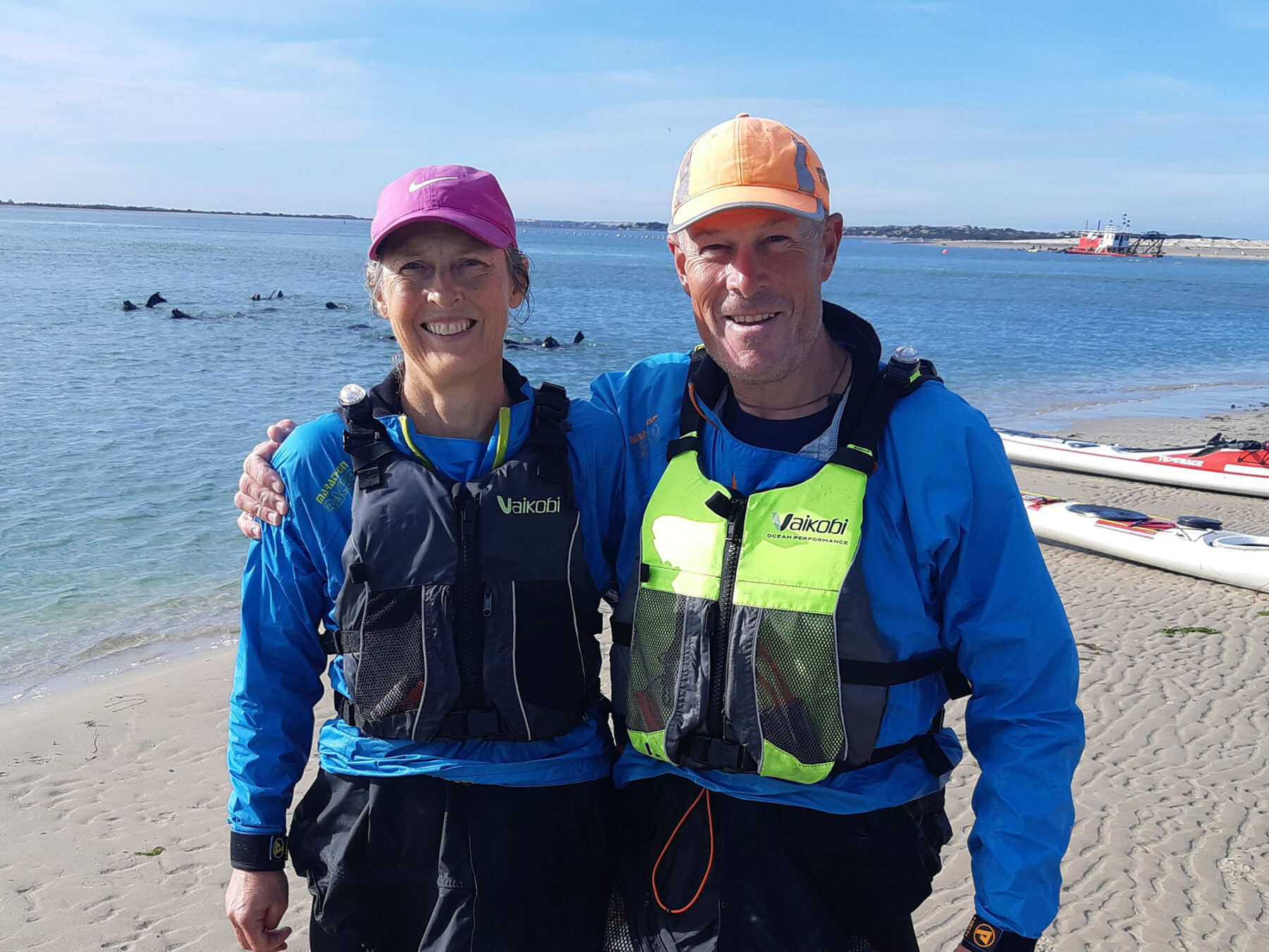
The result is a very strong CV. As solo paddlers, or as a team, they hold class/age/gender records in most Australian distance events over 40km. There are many wins and podiums too, including Sydney’s 111km overnight Hawkesbury Classic and the 404km Murray Marathon.
While the couple had never done an event of this magnitude before their ill-fated 2023 attempt, they have plenty of endurance experience, the 700km Yukon prelude and the 420km non-stop Texas Water Safari included.
Steve says they are a good team because they’re different in ways that complement each other. He says Kate brings a focus and relentlessness to the team, where he is much more reckless with a short attention span.
“I’m good at reading the water and finding shortcuts that are not always completely navigable unless you’ve got some speed up and don’t care about scratches. I’ve broken more boats than Kate!”
They also take turns at leadership on the water. On the Yukon, Steve steers for reading the braids of the river whereas, in almost every other race, Kate steers to cut the corners and save distance.
“On the Safari, our fastest section was from Kate steering through 70 miles of bends, taking a line that our Texan team mates were convinced was wrong.”
All of that preparation made them perfect candidates for the Yukon 1000 which, while it is called a ‘race’, is more like an expedition, where entrants have to be completely self-sufficient. Crews paddle for 18 hours a day, with a mandatory six-hour overnight stop. Never mind paddling pace, the real key is how efficient you are off the water: decisively picking a camping spot, set up your sleeping arrangements immediately, eat and sleep. In the morning, pack up while you heat water, then back onboard, shovelling spoonfuls of porridge between paddle strokes while you’re pushed by the current.
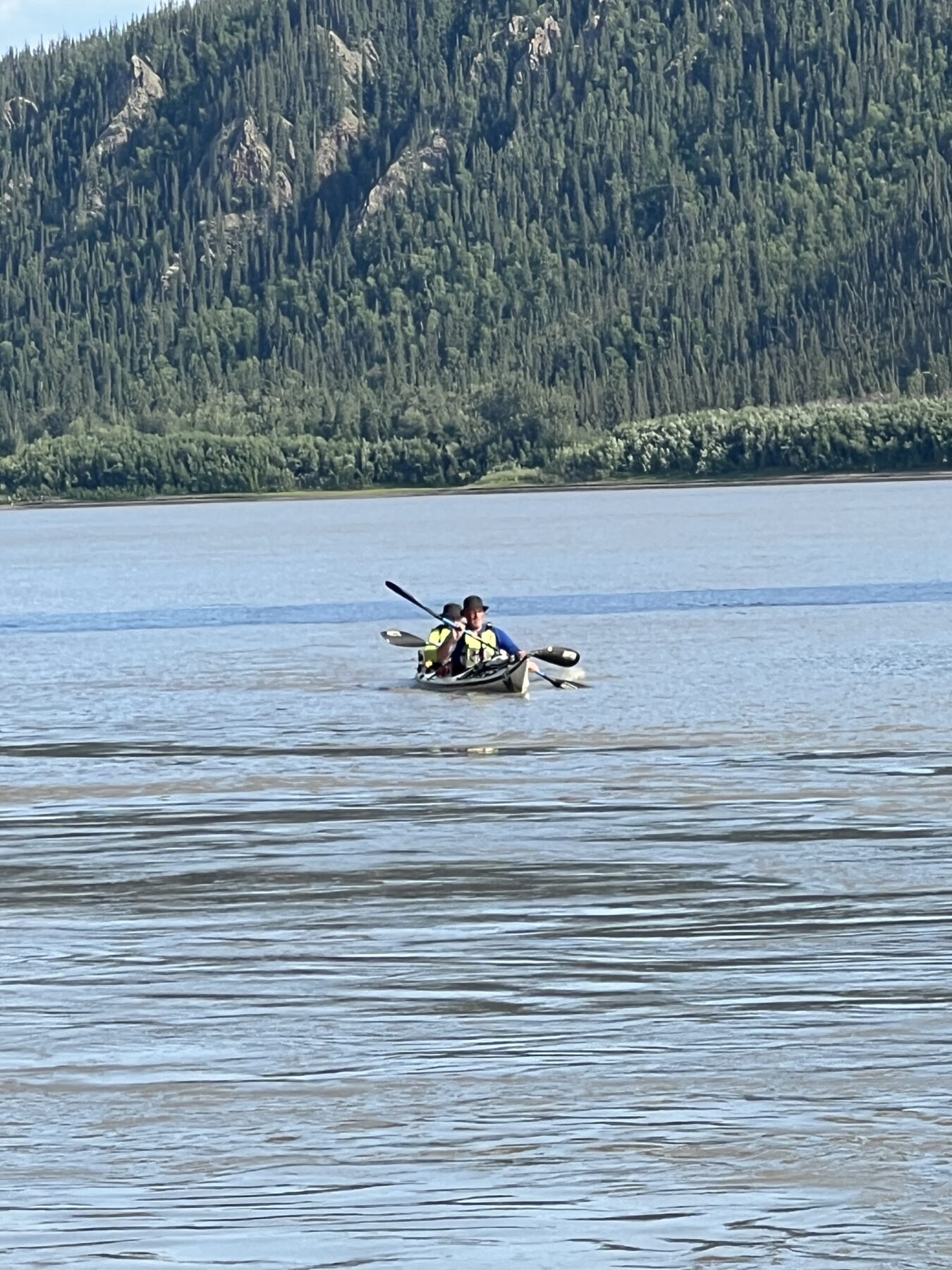
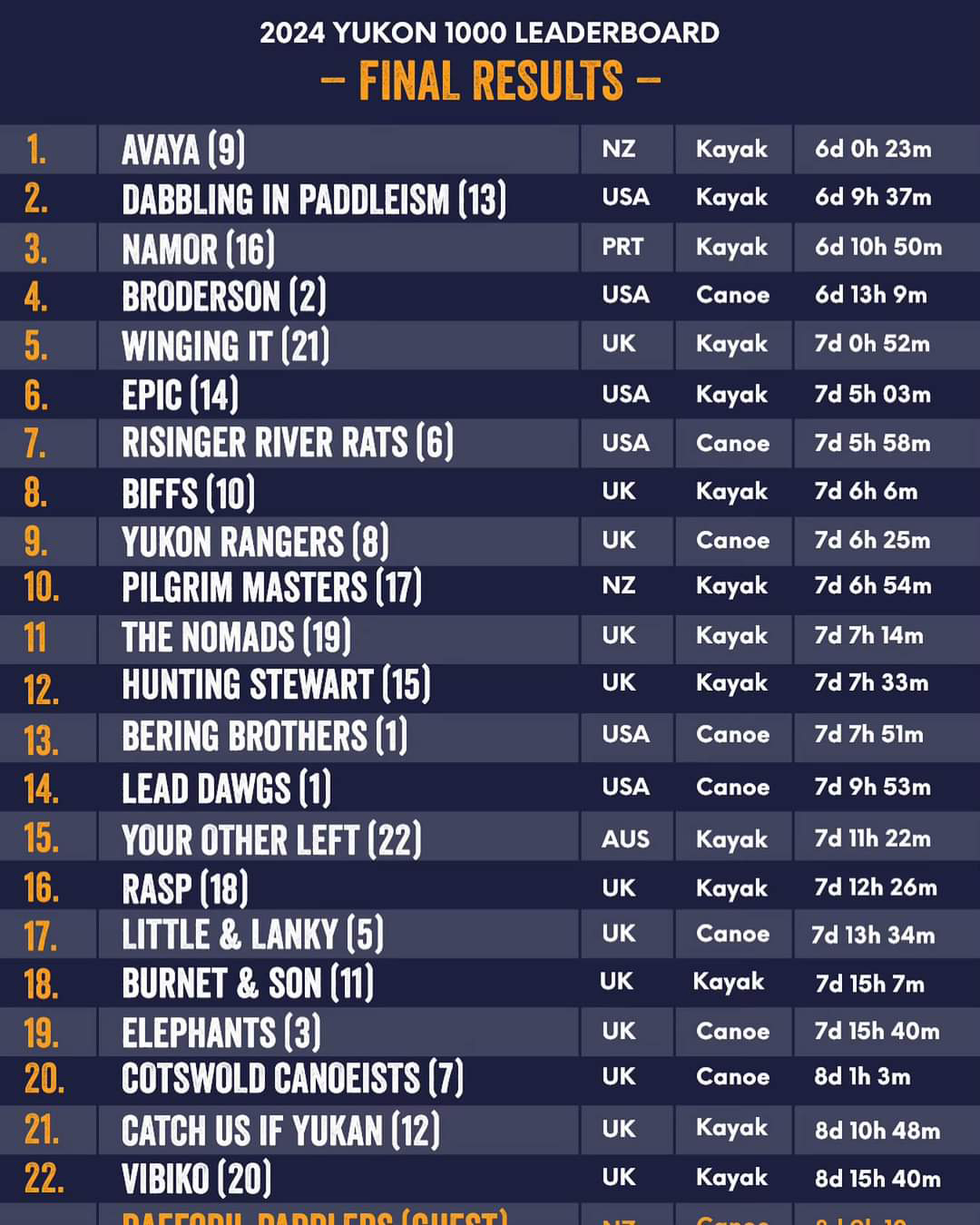
The fastest competitors have completed it in 5.5 days but, because it’s not a holiday, there’s a final cut-off time [determined by river conditions and specified at the briefing] and a checkpoint at 700km where the organisers will insist you withdraw if you’re not moving fast enough. After that, you either go to the end (in the required time frame) or you need to be rescued, which is extremely difficult because of the remoteness, and extremely expensive. All paddlers must have comprehensive private remote recovery insurance so there’s no taxpayer cost.
“If you are unable to self-evacuate, you’re entering a whole universe of complicated. The race fees include provision for evacuation of casualties – or corpses. At the lower end of the scale, you can use the mandatory sat phone to call for medical advice, progressing up-scale to a full boots-on-the-ground casualty evacuation.
“The rescue co-ordination centre will assess your situation and mobilise whatever assets are required to evacuate your casualty to a suitably equipped hospital, with caveats…
“They probably won’t get to you for 48-72 hours. You will need to get close to an airfield where a Medevac flight can land and they won’t take your boat, your gear, or your partner. The uninjured crew member may be expected to continue to the finish alone.”
Steve and Kate have done all the preparation they can to avoid that scenario. Taking risks is not part of the 2025 plan – but neither is a podium. They simply want to finish – in less time than last year – and enjoy the experience, given more people have made it to the top of Mount Everest than finished this race.
As for what’s next, maybe an event somewhere warmer. Or not. After all, there are nine kayaks at home to play with – except Steve and Kate aren’t done racing yet, are they? He laughs.
“Our youngest daughter is now working near London so that gives us an excuse to go to the UK and maybe do the ‘The Devizes to Westminster International Canoe Race’. It finishes on the Thames and includes canals and picking up your boat and running around locks and things. Very different to the Yukon.
“Maybe next Easter or the one after that, we might do that, or there’s a race down the Dordogne River in France which sounds rather nice. I think we will get this one done and dusted before we make too many more plans.
“Long-term, we’d really like our kids and future grandchildren to see that life can be filled with adventures on a massive scale.”
The Dawsons’ guide to making it to the end
Ignore this at your peril because there is no easy way to leave the event before you do get to the end!
Know how to pace yourself: the absolute cut-off for the event is around nine and a half days, depending on water level. You need a plan that can change, and some luck. Low water levels mean detouring around sandbanks; high water can mean taking a direct line, which is obviously faster. We split the difference between the fastest time and the cut-off time and planned for that – around seven days and 11 or 12 hours. From there, including mandatory time off the water, you work out the distance, the total time frame, and how many kilometres you need to cover each day, plus some leeway for the unexpected. Don’t try to match other people – you don’t know their strategy. They may be trying to match you.
Don’t overtrain: Race organiser Jon Frith advises people not to do the race before the race, and that’s true. You have to be fit and able to paddle reasonably comfortably for 18 hours – which is what is required – but don’t train to the point of injury before the start or you will be tired.
Understand that things go wrong: our philosophy is, the more you plan, the more likely you are to finish. So check the maps thoroughly, make sure you have really good gear, think about what you might need if you hit smoke. In any event like this, something will go wrong, but if you have planned thoroughly, it won’t be that 90 per cent you’ve already considered. It will be something else. Try to consider as many possibilities as you can, and the solutions for them. If something happens on the river that you hadn’t considered, you can start to unravel and that is not a good thing when you are somewhere remote. Remember, there is no safety crew.
Be realistic about your paddle skills: Good technique can’t be overstated. Getting your technique right makes you fast and it prevents injuries. Avoiding injuries is far better, especially with such a remote event. If something is irritating you at the start of the day, stop immediately and get comfortable. Don’t continue and make it worse.
Be realistic about the other skills needed: You can’t just enter this race; you need to be invited. For that to happen, you both need to show you have off-trail navigational skills and multi-day wilderness experience. You need to pack everything you will need for the full trip – to be fully self-reliant – and have enough first aid knowledge to stabilise a casualty for 48 hours. If you’re an Australian paddler, having the Hawkesbury race or some other endurance race on your resume is a good start. You need to be able to keep yourselves safe.
Pre-agree your red lines for risk: We had a lot of conflict on the water in 2023 because we disagreed on the point where risks would have us pull out. We ultimately argued our way to the right decision. Better to agree ahead of time on the conditions where you will not be safe. Flood levels, weather conditions, medical events. It’s poor risk management to change the rules under duress, no matter how much money you have spent to that point.
Take safety gear seriously: You can satisfy the safety equipment list with a paper painter’s mask for smoke and a few waterproof matches for fire starting but consider taking something more robust. I spent 12 hours wearing a mask through the section from Fort Yukon to White River which would have been impossible with a paper mask. The same with tents. We have a two-person ultralight but we took a 2.3kg five seasons which was more robust, had good space inside for us and our electronics, and it had good separation between the dry inner and the very wet outer, which was permanently wet, because it was never left to dry out before we packed it.
Expect the maps to be wrong: Not because of anything malicious – the river changes. It’s not unusual for the map to show one thing and you find things have changed because of floods, currents, weather or fallen branches. Same goes for borrowing a map from a previous competitor who has marked specific things for their own use – it may not be the same when you get there. If you have studied the tracks from a prior year and a team has taken a different route, maybe it’s faster or maybe they were looking for somewhere private to answer a call of nature!
Don’t short-change yourself on sleep: sleep is a strategic tool. The race rules say you must stop for six hours but there is no rule against you sleeping for 10 hours. Do what works for you and your body. If you’re at the point where you think you want to give up, don’t. Apart from the logistics of getting out of a remote area, chances are if you pull over and have a few hours’ sleep, things will look better when you wake up. If you’re a reasonably competent paddler, you can sleep longer and still finish inside the cut-off.
Maintain your sense of humour: at certain points and situations along the way, you just need to be able to laugh things off. There are other times when you should really just shut up and paddle.
Photo credits: Harry Alexander, Steve Dawson, Jon Frith, @weronikamurray, Peter Zenkl, courtesy of Yukon 1000.
For more information on this incredible paddling event, see Yukon 1000.
